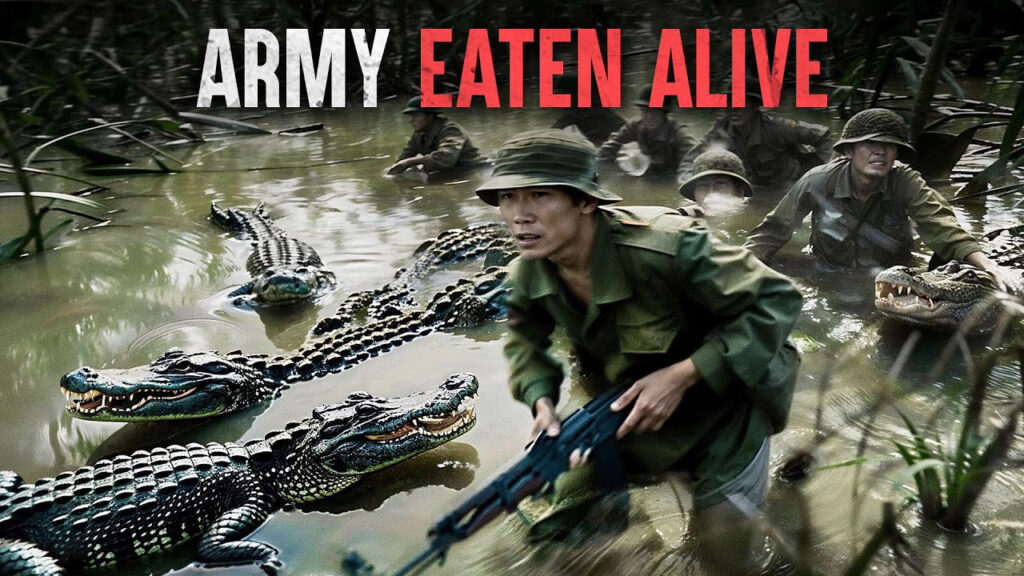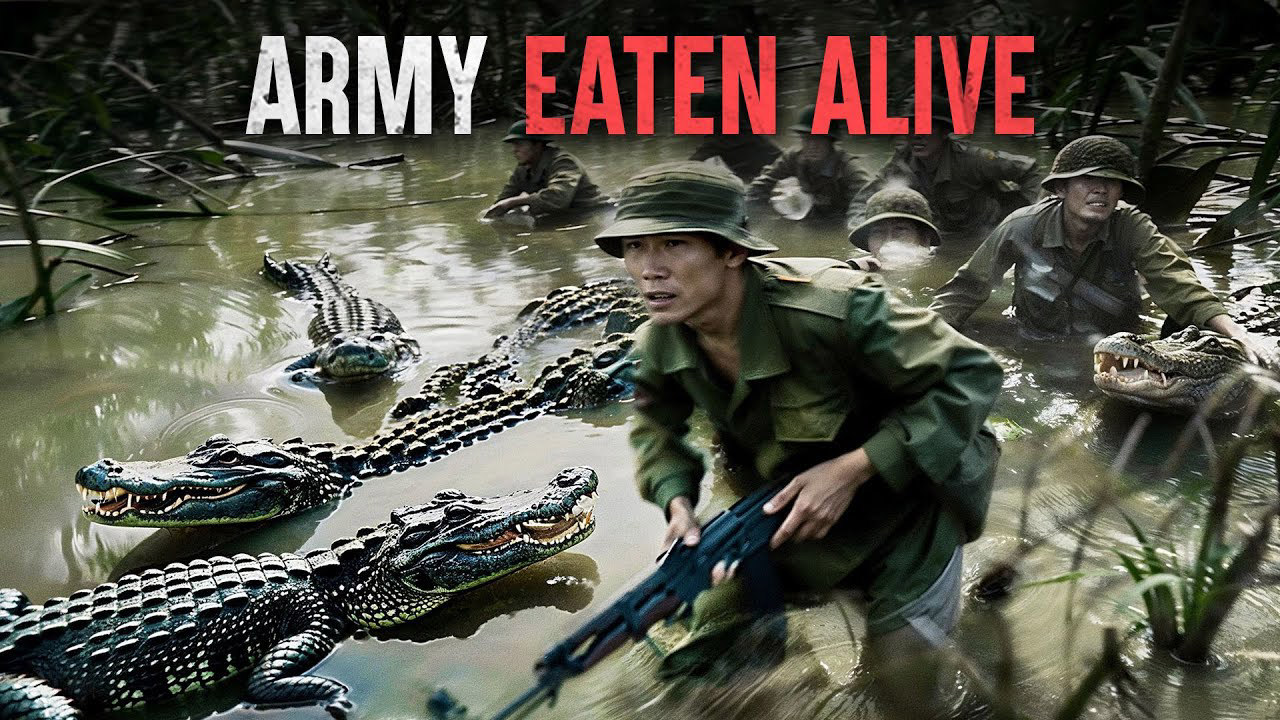
The Ramree Island Massacre: Unveiling a World War II Tragedy
The Ramree Island Massacre remains one of the most horrifying and debated events of World War II. While often cited as the incident with the largest number of crocodile attacks on humans, the truth is far more nuanced and complex. This article delves into the historical context, separates fact from myth, and examines the human cost of this tragic episode. We aim to provide a comprehensive understanding of what happened on Ramree Island, exploring the military operations, the environmental factors, and the enduring legacy of this event.
Background: The Battle of Ramree Island
In early 1945, the island of Ramree, located off the coast of Burma (now Myanmar), became a crucial strategic objective for the Allied forces. The Japanese had established a stronghold there, and its capture was essential for advancing the Allied campaign in Southeast Asia. The battle for Ramree Island involved fierce fighting between British and Japanese troops. The initial amphibious landing by the Allies was met with stiff resistance, and the ensuing weeks saw intense combat across the island’s dense mangrove swamps and difficult terrain.
The Japanese forces, belonging to the 54th Infantry Division, were eventually pushed back by the advancing Allied troops. However, a significant number of Japanese soldiers, estimated to be around 500-1000, attempted to retreat across the island’s mangrove swamps to rejoin the main Japanese force. It was during this retreat that the alleged massacre occurred.
The Controversial Narrative: Crocodile Attacks and the Ramree Island Massacre
The conventional narrative, popularized by some historical accounts and media portrayals, describes a scene of unimaginable horror. According to this version, as the Japanese soldiers retreated into the mangrove swamps, they were attacked en masse by saltwater crocodiles. Thousands of soldiers were supposedly devoured by these reptiles, resulting in what is often described as the “worst crocodile disaster in the world.” This version of events paints a picture of chaos and carnage, with the screams of dying soldiers echoing through the night.
However, this narrative has been heavily scrutinized by historians and zoologists. While it is undeniable that crocodiles inhabited the mangrove swamps of Ramree Island and that some Japanese soldiers likely fell victim to them, the scale of the alleged massacre has been widely questioned. The lack of concrete evidence, the reliance on anecdotal accounts, and the exaggeration of the number of casualties have led many to believe that the story has been significantly embellished over time.
Examining the Evidence: Separating Fact from Fiction
The primary source for the sensationalized account of the Ramree Island Massacre is often attributed to British naturalist Bruce Wright, who participated in the battle. Wright described the events in his book, but his account has been criticized for its lack of factual basis and its reliance on hearsay. No official military records or contemporary reports support the claim of thousands of soldiers being killed by crocodiles. It is important to note that while Wright was present on Ramree Island, his primary role was not to document the events of the retreat through the mangrove swamps. His account, while dramatic, should be viewed with a healthy dose of skepticism.
Furthermore, zoological experts have raised doubts about the feasibility of such a large-scale crocodile attack. Saltwater crocodiles are indeed formidable predators, but they typically hunt opportunistically and do not engage in coordinated attacks on large groups of humans. While a few isolated incidents of crocodile attacks are plausible, the idea of thousands of soldiers being devoured in a single night is highly improbable.
Alternative Explanations for the High Casualty Rate: It’s far more likely that the majority of Japanese soldiers who perished in the mangrove swamps died from a combination of factors, including:
- Starvation and Dehydration: The mangrove swamps were a harsh and unforgiving environment, lacking readily available food and fresh water. Soldiers, already weakened by weeks of fighting, would have quickly succumbed to starvation and dehydration.
- Disease: The swamps were rife with disease-carrying insects and parasites. Tropical diseases such as malaria and dysentery would have taken a heavy toll on the retreating soldiers.
- Drowning: The mangrove swamps were characterized by deep mud, treacherous currents, and tidal fluctuations. Many soldiers, exhausted and disoriented, likely drowned in the murky waters.
- Allied Fire: While the focus is often on the crocodiles, Allied forces continued to pursue the retreating Japanese soldiers, and many were undoubtedly killed in combat or by artillery fire.
The Human Cost: Remembering the Victims of Ramree Island
Regardless of the exact circumstances surrounding the deaths of the Japanese soldiers on Ramree Island, it is crucial to remember the human cost of this tragedy. The soldiers who perished in the mangrove swamps were victims of war, caught in a desperate situation and facing unimaginable hardship. Their suffering should not be overshadowed by sensationalized accounts or exaggerated claims.
The Ramree Island Massacre serves as a stark reminder of the brutal realities of war and the importance of historical accuracy. While the story of thousands of soldiers being devoured by crocodiles may capture the imagination, it is essential to approach such narratives with critical thinking and to seek out reliable sources of information. The true tragedy of Ramree Island lies not in the exaggerated tales of crocodile attacks but in the loss of human lives and the enduring impact of war on those who were involved.
The Role of Mangrove Ecosystems in Coastal Protection
While the Ramree Island Massacre is a somber event, it also sheds light on the critical role that mangrove ecosystems play in coastal protection. Mangroves are unique and valuable habitats that provide a wide range of ecological services, including:
- Coastal Erosion Control: Mangrove forests act as natural barriers, protecting coastlines from erosion caused by waves, tides, and storms. Their dense root systems stabilize the soil and prevent it from being washed away.
- Storm Surge Protection: Mangroves can significantly reduce the impact of storm surges, absorbing wave energy and reducing flooding in coastal communities.
- Habitat for Marine Life: Mangrove forests provide essential breeding and nursery grounds for a wide variety of fish, crustaceans, and other marine species. They also support a rich diversity of birdlife and other wildlife.
- Carbon Sequestration: Mangroves are highly efficient at sequestering carbon dioxide from the atmosphere, helping to mitigate climate change.
The mangrove swamps of Ramree Island, while a site of tragedy, also represent a vital ecosystem that deserves protection and conservation. Understanding the ecological importance of mangroves can help us to appreciate their value and to work towards their sustainable management.
Analyzing Historical War Accounts: The Importance of Critical Evaluation
The Ramree Island Massacre highlights the importance of critically evaluating historical war accounts. Sensationalism, exaggeration, and bias can all distort the truth and obscure the complexities of historical events. When examining historical narratives, it is essential to consider the following factors:
- Source Reliability: Assess the credibility and objectivity of the sources being used. Are they based on firsthand accounts, official records, or hearsay?
- Author Bias: Consider the author’s perspective and potential biases. Are they trying to promote a particular agenda or viewpoint?
- Corroborating Evidence: Look for corroborating evidence from multiple sources to verify the accuracy of the information.
- Contextual Understanding: Understand the historical context in which the events occurred. What were the political, social, and economic factors that influenced the events?
By applying these principles of critical evaluation, we can gain a more accurate and nuanced understanding of historical events and avoid perpetuating myths and misconceptions.
The Enduring Legacy of Ramree Island
The Ramree Island Massacre, whether based on fact or embellished by legend, remains a powerful symbol of the horrors of war. It serves as a reminder of the importance of seeking truth and understanding in the face of conflicting narratives. By critically examining the events of Ramree Island, we can learn valuable lessons about the human cost of conflict, the importance of ecological preservation, and the need for historical accuracy.
While the sensationalized accounts of crocodile attacks may continue to capture the public’s imagination, it is essential to remember the real victims of Ramree Island: the soldiers who perished in the mangrove swamps, far from home and facing unimaginable hardship. Their memory deserves to be honored with respect and a commitment to seeking the truth.
Reflecting on the Lessons of War
The story of Ramree Island compels us to reflect on the broader lessons of war. The devastating consequences of armed conflict extend far beyond the battlefield, impacting individuals, communities, and ecosystems. By learning from the past, we can work towards a future where such tragedies are avoided and where peace and understanding prevail.
We encourage you to share your thoughts and perspectives on the Ramree Island Massacre in the comments below. Let us engage in a respectful and informed discussion about this important historical event and its enduring legacy.

